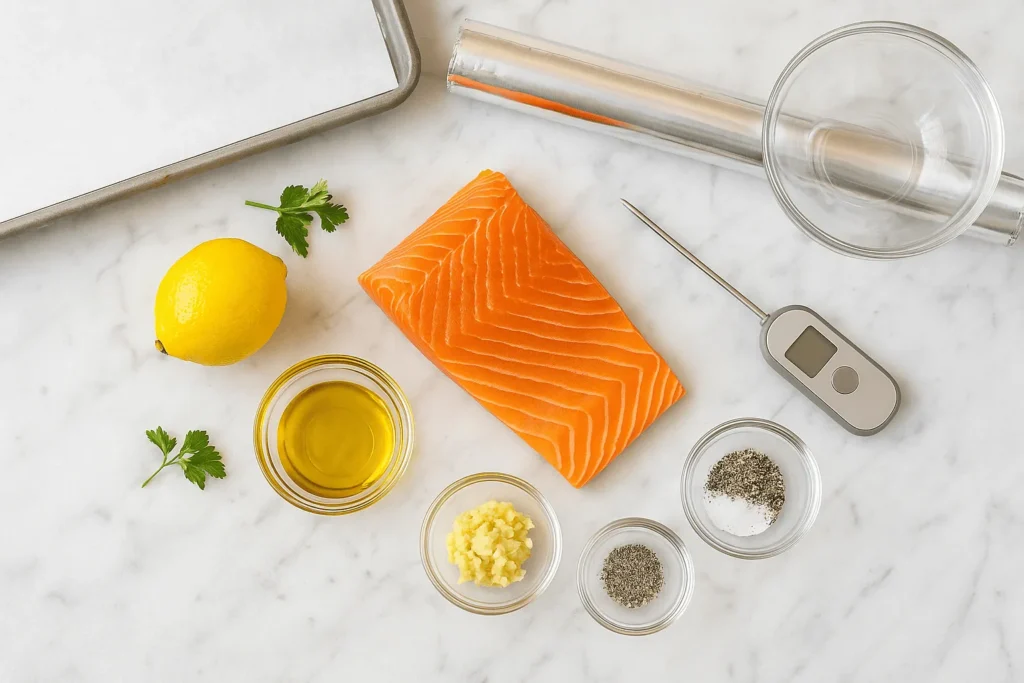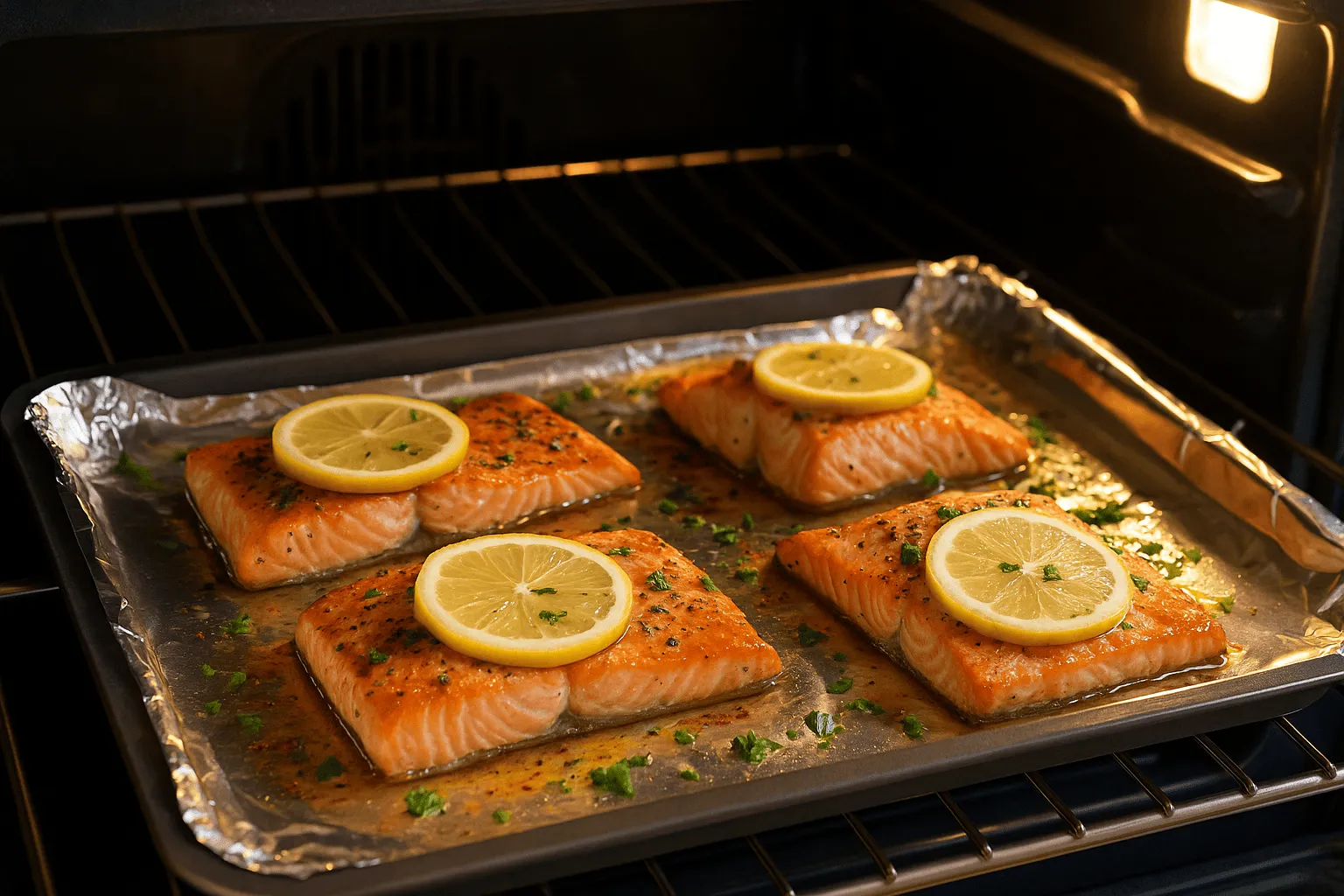Unlock the Secret to Perfect Baking Salmon in Oven
Have you ever set out to bake salmon in the oven, only to be disappointed with a dry, tough piece of fish? You’re not alone. Many home cooks shy away from baking salmon in oven because they fear overcooking it. But guess what? You can master it—and it’s easier than you might think. With just a few simple techniques and a sprinkle of care, you can create a dish so juicy and flaky that it’ll become a staple at your dinner table. Whether you’re planning a cozy weeknight meal or impressing guests on a special occasion, perfecting your salmon game will instantly elevate your kitchen skills. Let’s dive in!
Why Bake Salmon in the Oven?
salmon fillets in the oven offers a level of control that other methods, like pan-frying or grilling, sometimes lack. Here’s why you should choose the oven next time:
Benefits of Oven-Baked Salmon
- Even Cooking: The gentle, ambient heat of the oven ensures every bite is cooked through but never overdone.
- Moisture Retention: Baking at the right temperature traps the natural juices inside the fish.
- Convenience: You set it, forget it (for a bit), and come back to a masterpiece.
- Minimal Cleanup: Line your baking sheet with foil or parchment for easy after-dinner cleanup.
Plus, salmon is a nutritional powerhouse, packed with omega-3 fatty acids, lean protein, and essential vitamins like D and B12. It’s a simple way to enjoy a heart-healthy meal without sacrificing flavor.
Choosing the Best Salmon
Before you even preheat your oven, you need the right salmon. Not all fillets are created equal.
Fresh vs. Frozen Salmon
Fresh salmon usually delivers superior texture and taste. However, don’t underestimate frozen salmon—if it’s flash-frozen at sea, it can be just as high-quality.
Pro Tip: When buying frozen, check the label for “wild-caught” and “flash-frozen.”
Wild-Caught vs. Farmed Salmon
- Wild-Caught: Tends to be leaner, more flavorful, and environmentally friendly.
- Farmed: Often fattier and milder in taste, but more affordable.
When possible, opt for sustainably sourced salmon. Look for certifications from the Marine Stewardship Council (MSC) or consult seafood watch guides.
How to Spot Fresh Salmon
- Color: Vibrant pink or reddish hue.
- Texture: Firm, not mushy or slimy.
- Smell: Clean, ocean-fresh scent (never “fishy”).
Choosing wisely ensures you’re already halfway to a delicious dish before you even start cooking.
Essential Tools & Ingredients

Setting yourself up with the right gear and ingredients makes baking salmon for juicy results a breeze.
Tools You’ll Need
- Baking Sheet: Non-stick or lined with parchment paper.
- Aluminum Foil: Helps trap moisture.
- Meat Thermometer: Ensures perfect doneness.
- Mixing Bowls: For prepping marinades or seasoning.
Must-Have Ingredients
Here’s a handy table to guide your prep:
| Ingredient | Quantity | Notes |
|---|---|---|
| Salmon Fillet | 1 lb | Fresh or thawed |
| Olive Oil | 2 tbsp | Adds moisture and flavor |
| Lemon | 1 | Sliced for topping |
| Garlic | 2 cloves | Minced |
| Salt & Pepper | To taste | Essential seasoning |
| Fresh Herbs | Optional | Dill, parsley, or thyme |
You can also experiment with additional flavors like honey, mustard, or soy sauce for different profiles.
How to Bake Salmon in the Oven: Step-by-Step
Ready to bake? Follow these steps carefully, and you’ll end up with a tender, restaurant-quality fish.
Preparation Steps
- Preheat your oven to 375°F (190°C).
- Pat the salmon dry using paper towels. Moisture on the surface can cause steaming instead of roasting.
- Season generously with olive oil, salt, pepper, and minced garlic.
- Layer lemon slices and fresh herbs over the top for a fresh aroma.
Baking Instructions
- Line your baking sheet with foil or parchment paper for easy removal.
- Place the salmon skin-side down (if it has skin) on the sheet.
- Bake uncovered for 12–15 minutes. Thicker fillets might need closer to 18 minutes.
- Check internal temperature with a meat thermometer: it should read 145°F (63°C).
- Let it rest for 2–3 minutes after baking. This lets the juices redistribute.
Tips for a Juicy, Flaky Salmon Every Time
You don’t have to be a professional chef to bake perfect salmon—you just need to remember these golden rules:
Temperature is Everything
- Avoid baking above 400°F. Higher temps risk drying out your fish.
- Stick to the 375°F–400°F range for consistent results.
Don’t Overcook
- Always check a few minutes before your timer goes off.
- If the flesh flakes easily with a fork, it’s done!
Use Foil Tents (Optional)
- Loosely tenting the salmon with foil during baking locks in moisture.
Marinade Smartly
- Marinate your salmon for no more than 30 minutes if using acidic ingredients like lemon or vinegar—they can start to “cook” the fish.
Flavorful Seasoning Ideas
Plain salmon is great, but why not spice things up?
Simple Seasoning Combinations
- Lemon + Dill + Garlic: Classic, fresh flavor
- Soy Sauce + Honey + Ginger: Asian-inspired sweetness
- Paprika + Cumin + Chili Powder: Smoky and spicy twist
Quick Marinade Recipe
Whisk together:
- 2 tablespoons olive oil
- 1 tablespoon soy sauce
- 1 teaspoon honey
- 1 minced garlic clove
Pour over the salmon and marinate for 15–20 minutes before baking. Your taste buds will thank you.
Common Mistakes to Avoid
Knowing what not to do is just as crucial as knowing what to do.
Top Mistakes
- Skipping Preheating: Always preheat to stabilize cooking temperatures.
- Overbaking: Leads to dry, chewy salmon.
- Not Drying the Fish: Leads to steaming instead of baking.
- Overloading with Seasoning: Drowns out the salmon’s natural flavor.
Stick to simple rules, and success is practically guaranteed.
FAQs About Baking Salmon in Oven
How long does it take for baking salmon in oven?
It typically takes 12–15 minutes at 375°F for a standard 1-inch-thick salmon fillet. Thicker pieces might need closer to 18 minutes. Always check with a thermometer!
Should you cover salmon when baking in the oven?
Covering is optional. Baking uncovered gives you a crispier texture. If you want extra juicy results, tent your salmon loosely with foil.
How can you tell if salmon is done baking?
Your salmon is ready when the internal temperature reaches 145°F and the flesh flakes easily with a fork.
Can you bake salmon straight from frozen?
Yes, but it will take about 50% longer to cook. It’s best to thaw first for more even results and better texture.
What’s the best temperature for baking salmon in oven?
The sweet spot is 375°F. It ensures the fish stays juicy and doesn’t dry out.
How do you keep salmon moist while baking?
Brush it with olive oil, avoid overcooking, and consider lightly covering it with foil during baking.
Conclusion: Master the Art of Baking Salmon in the Oven
Baking salmon in the oven doesn’t have to be intimidating. When you choose the right piece of fish, prepare it with care, and follow the simple steps you’ve just learned, you’ll create a dish that’s juicy, flaky, and packed with flavor. Whether you stick to the basics or play with marinades and spices, you’ll never have to suffer through dry salmon again.
Ready to put these tips to the test? Head to your local market, grab a fresh fillet, and start baking your way to salmon perfection today. Share your creations with friends and family—and maybe even inspire someone else to master the art of oven-baked salmon!





